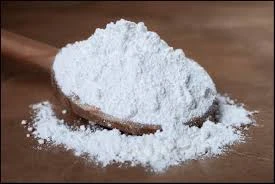
emulsifier 322 476
Understanding Emulsifier E322 and E476 Functions, Applications, and Considerations
Emulsifiers are vital ingredients in the food, pharmaceutical, and cosmetic industries, playing a crucial role in stabilizing mixtures that typically do not blend well, such as oil and water. Among the various types of emulsifiers, E322 and E476 have gained notable attention for their distinct properties and wide-ranging applications. This article will explore these emulsifiers in depth, looking at their sources, functions, applications, and potential concerns associated with their use.
What are Emulsifiers E322 and E476?
Emulsifier E322, known as Lecithin, is a naturally occurring phospholipid found in the membranes of many plants and animal cells. It is particularly abundant in soybeans, sunflower seeds, and egg yolks. Lecithin is often extracted and used in food and pharmaceutical formulations to improve texture and stability.
Emulsifier E476, or Polyglycerol Esters of Fatty Acids, is a synthetic emulsifier derived from glycerin and fatty acids. It is made through the esterification of natural fatty acids, resulting in a compound that can effectively stabilize emulsions and prevent the separation of ingredients.
Functions of E322 and E476
Both E322 and E476 serve essential functions in various formulations. E322 acts as an emulsifier by lowering the surface tension between oil and water, which helps mix these immiscible components and creates a stable emulsion. This property is particularly beneficial in products like margarine, salad dressings, and chocolate, where the uniformity of texture and taste is critical.
E476, on the other hand, also serves as an emulsifier but with additional benefits. It has been found to enhance the texture and mouthfeel of food products. It prevents the crystallization of fats, which is especially favorable in chocolate production. Moreover, E476 can improve the stability and shelf life of products by reducing oxidative rancidity, thus safeguarding the integrity of flavors and aromas over time.
emulsifier 322 476

Applications in the Food Industry
Emulsifiers E322 and E476 find extensive use in the food industry. E322 is often added to baked goods, snacks, and dairy products to maintain consistency and improve moisture retention. It also plays a significant role in the production of chocolate and confectionery, where smoothness and sheen are highly valued.
E476 is commonly used in the manufacturing of margarine, spreads, and sauces. Its ability to stabilize emulsions makes it a preferred choice in creamy products where separation is a concern. Additionally, it is often used in low-fat and reduced-fat formulations to improve texture without contributing significantly to calories.
Nutritional Considerations
One of the primary benefits of both E322 and E476 is their ability to enhance the nutritional quality of food products. Lecithin (E322) is rich in choline, an essential nutrient that supports brain health and cognitive functions. However, individuals with soy allergies should exercise caution, as many lecithin sources are derived from soybeans.
Conversely, E476 has been evaluated for its safety and is generally recognized as safe (GRAS) by food safety authorities. Nonetheless, as a synthetic emulsifier, it may cause concerns for consumers who prefer natural ingredients. It is essential for manufacturers to provide clear labeling to accommodate consumers' preferences and dietary restrictions.
Conclusion
Emulsifiers E322 and E476 are indispensable components in modern food and pharmaceutical formulations. Their ability to stabilize mixtures enhances product quality, improves texture, and extends shelf life. While E322 offers the benefit of being a natural ingredient with nutritional advantages, E476 provides the functionality and stability desired in industrial applications. As with any food additive, consumers should be informed about the ingredients they are consuming and make choices that align with their health and dietary goals. As the demand for clean-label products increases, understanding the roles and implications of such emulsifiers becomes more crucial than ever.
-
Understanding Synthetic Rubber OptionsNewsApr.27,2025
-
Trichloroisocyanuric Acid: Essential for Clean and Safe WaterNewsApr.27,2025
-
Sodium Dichloroisocyanurate: Key to Safe Water TreatmentNewsApr.27,2025
-
Sodium Acid Pyrophosphate: Essential in Modern Food ProcessingNewsApr.27,2025
-
Essential Water Treatment ChemicalsNewsApr.27,2025
-
Denatured Alcohol and Its Industrial UsesNewsApr.27,2025
-
The Versatile Uses of Sodium BicarbonateNewsApr.24,2025
Hebei Tenger Chemical Technology Co., Ltd. focuses on the chemical industry and is committed to the export service of chemical raw materials.
-

view more DiethanolisopropanolamineIn the ever-growing field of chemical solutions, diethanolisopropanolamine (DEIPA) stands out as a versatile and important compound. Due to its unique chemical structure and properties, DEIPA is of interest to various industries including construction, personal care, and agriculture. -

view more TriisopropanolamineTriisopropanolamine (TIPA) alkanol amine substance, is a kind of alcohol amine compound with amino and alcohol hydroxyl, and because of its molecules contains both amino and hydroxyl. -

view more Tetramethyl Thiuram DisulfideTetramethyl thiuram disulfide, also known as TMTD, is a white to light-yellow powder with a distinct sulfur-like odor. It is soluble in organic solvents such as benzene, acetone, and ethyl acetate, making it highly versatile for use in different formulations. TMTD is known for its excellent vulcanization acceleration properties, which makes it a key ingredient in the production of rubber products. Additionally, it acts as an effective fungicide and bactericide, making it valuable in agricultural applications. Its high purity and stability ensure consistent performance, making it a preferred choice for manufacturers across various industries.











